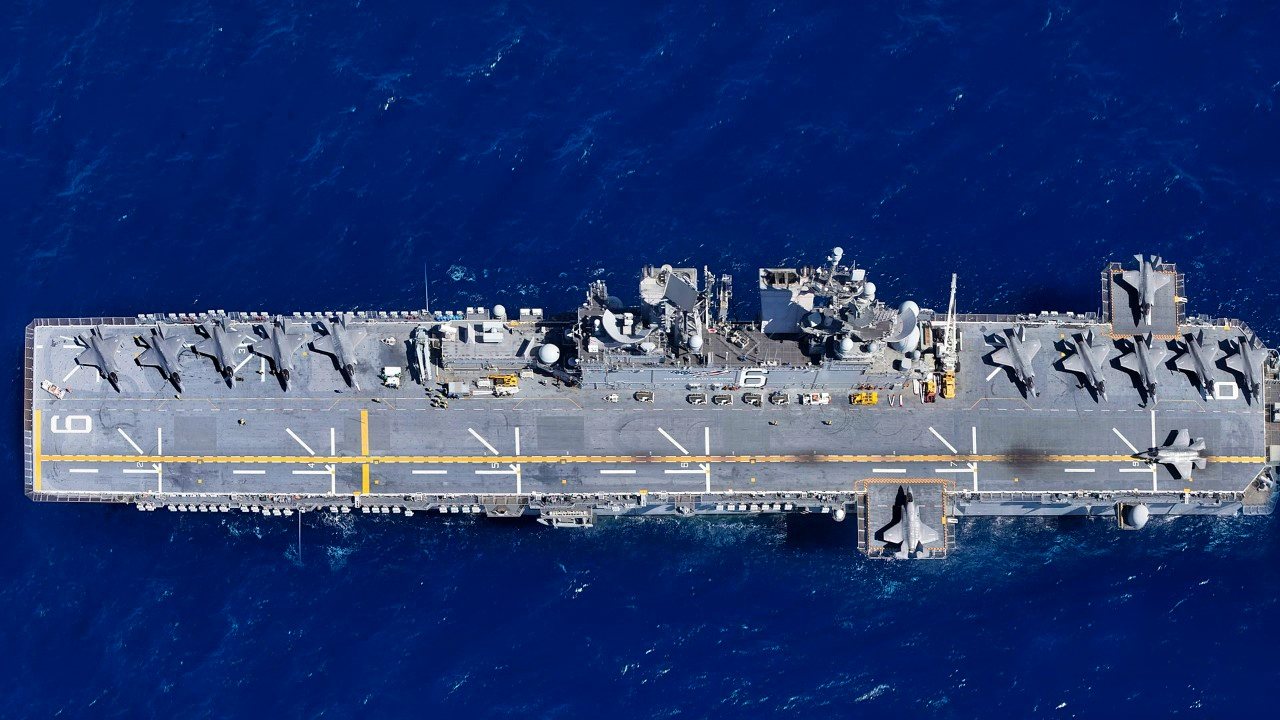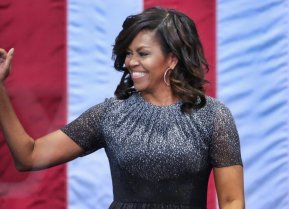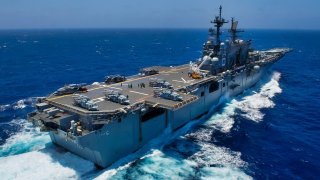Mini-Aircraft Carriers: The Navy's America-Class Assault Ships are Breathtaking
The Navy’s America-Class landing helicopter assault (LHA) type amphibious assault ships were designed to replace the earlier Tarawa class and based on the last ship of the Wasp-class- USS Makin Island. USS America, the lead ship in the class, was commissioned by Ingalls Shipbuilding in Pascagoula Mississippi in 2014, followed by the USS Tripoli and USS Bougainvile.
Meet the America-Class Amphibious Assault Ships: While aircraft carriers and destroyers may be the most recognizable large ships in the U.S. Navy’s arsenal, the service’s fleet of amphibious assault ships deserves consideration.
Designed to support the Marine Corps tenets of Operational Maneuver From the Sea (OMFTS), these essentially mini-aircraft carriers must be capable of carrying helicopters and other transport aircraft while remaining ready to sail right into harms’ way if necessary.
The U.S. military possesses the largest and most advanced amphibious force in the world, an asset that will prove to be instrumental if a full-blown kinetic conflict with Beijing arises in the near future.
The Navy’s America-Class landing helicopter assault (LHA) type amphibious assault ships were designed to replace the earlier Tarawa class and based on the last ship of the Wasp-class- USS Makin Island. USS America, the lead ship in the class, was commissioned by Ingalls Shipbuilding in Pascagoula Mississippi in 2014, followed by the USS Tripoli and USS Bougainvile.
USS Fallujah (LHA-9) and an unnamed LHA-10, are estimated to enter service sometime in the next decade. Manufacturer Northrop Grumman originally penned a whopping $2.4 billion fixed-price incentive contract with the Navy to build USS America back in 2007. A few years later, Northrop was awarded $175m to develop the USS Tripoli and later $272 million to build USS Bougainville.
The America-class ships were constructed to be able to carry a Marine Expeditionary Unit using helicopters and MV-22B Osprey V/STOL transport airframes, supported by F-35 Lightning II fighters, AV-8B Harrier IIs and a range of attack helicopters. While the America vessels have a similar displacement to the service’s former Midway-class aircraft carriers, they actually measure more than 124 feet shorter. In total, the America amphibious ships can carry up to 25 Harriers, F-35Bs, or a combination of the two.
Almost half of the America-class’ design is based on the final USS Makin Island. However, the newer vessels lack a well deck to enable additional room for aircraft, weapons, fuel and spare parts. Both the Makin Island and America-class ships are powered by gas turbines using JP-5 fuel. Harriers, Ospreys, Lightning IIs and helicopters all use the same jet fuel, simplifying the storage and distribution of the JP-5 on the ship.
In terms of armaments, each America-class ship is fitted with seven twin .50-calibre Browning machine guns and two 20mm Phalanx close-in weapon systems (CIWS). Countermeasures are also incorporated into the ships.
As outlined by Naval Technology, “The America class ships are fitted with the ship self-defense system (SSDS) developed by Raytheon. SSDS comprises software and commercial off-the-shelf hardware. It integrates radars with anti-air weapons, including hard-kill (missiles and rapid-fire gun systems) and soft-kill (decoys). The SSDS receives data from individual radars, the electronic support measures system (radar warning receiver) and the identification-friend or foe system. It forms a composite track from this data, which is used to identify, prioritize, and track threats.”

As tensions in the Red Sea, Persian Gulf and South China Sea continue to escalate, the timely introduction of the remaining America-class amphibious assault ships will be paramount.
About the Author: Maya Carlin
Maya Carlin, National Security Writer with The National Interest, is an analyst with the Center for Security Policy and a former Anna Sobol Levy Fellow at IDC Herzliya in Israel. She has by-lines in many publications, including The National Interest, Jerusalem Post, and Times of Israel. You can follow her on Twitter: @MayaCarlin.
Image Credit: Shutterstock.


